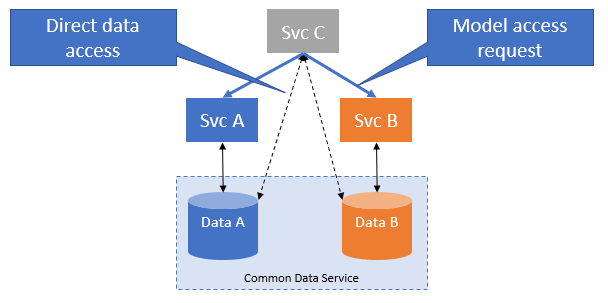By making the coupling that occurs in the data lake explicit, the concept of model ownership is introduced.
This essentially means that model and data access will be distributed.
The distributed nature of model and data access raises the question of how will a data user know what data is available and where to get permission to access it.
This was driven from a 5G use case need: Model & Access Flows
Decision
Details
- µService A provides its model to the CPS
- µService A registers its model with the 'Registry Service'. The registration includes details of the owning service and meta data that can be used in queries for models
- µService A retrieves data from an xNF (e.g. PNF#106)
- µService A stores data related to the xNF (and compliant to the model) in the CPS
- µService B queries the registry to determine if (a) matching models exist and (b) which µServices own them
- 'Registry Service', provides a list of matching µServices
- µService B requests access to model and data from µService A
- µService A grants (or denies) access to models and data – E.g. permission in the form of a secure token
- µService B uses the permission (e.g. token) to access the CPS
- The CPS provides data related to the xNF compliant with the model
Discussion
This issue was discussed during the weekly meeting

